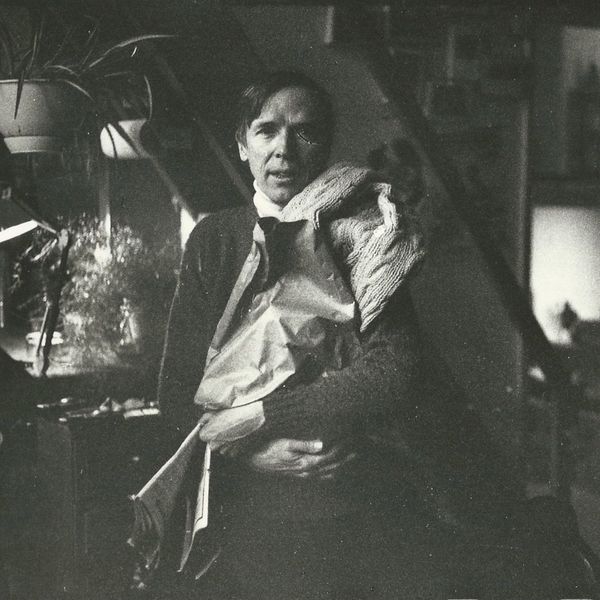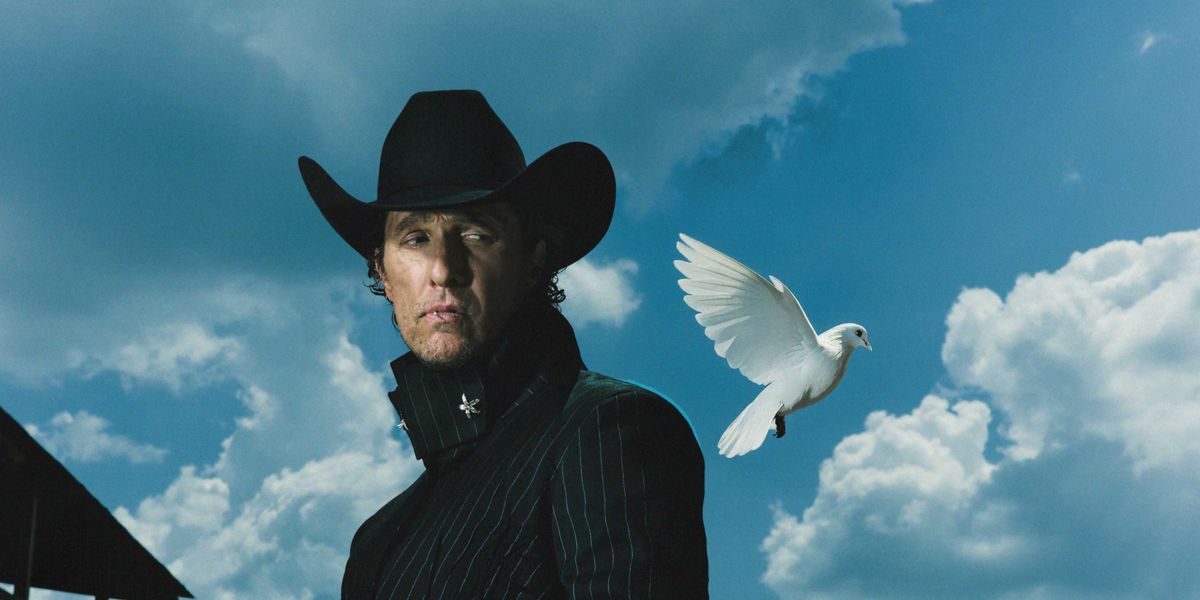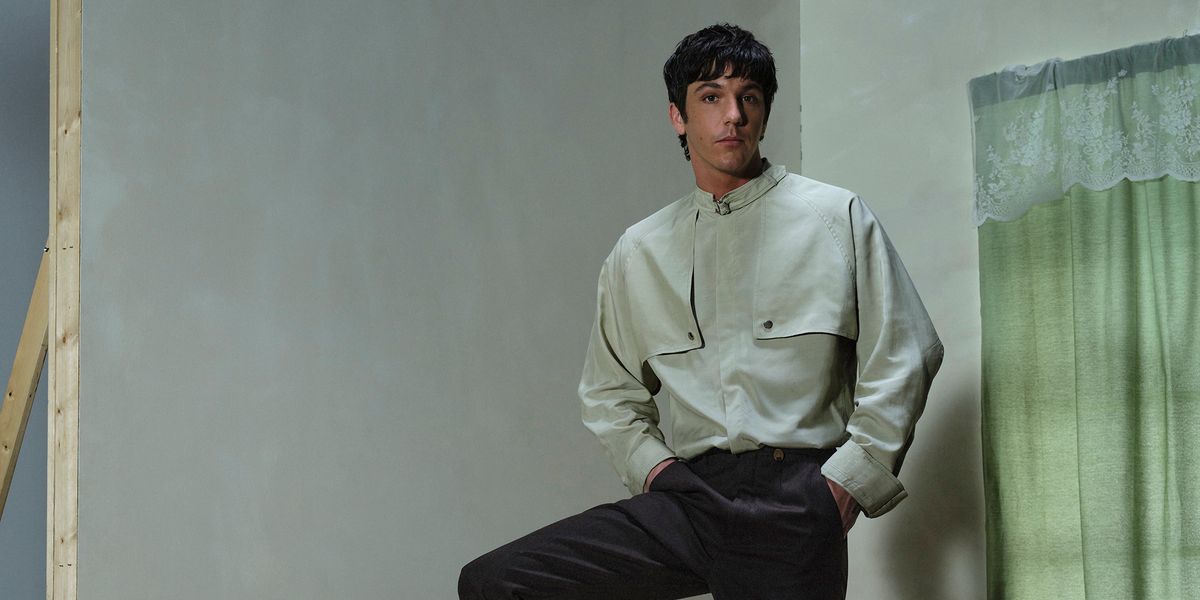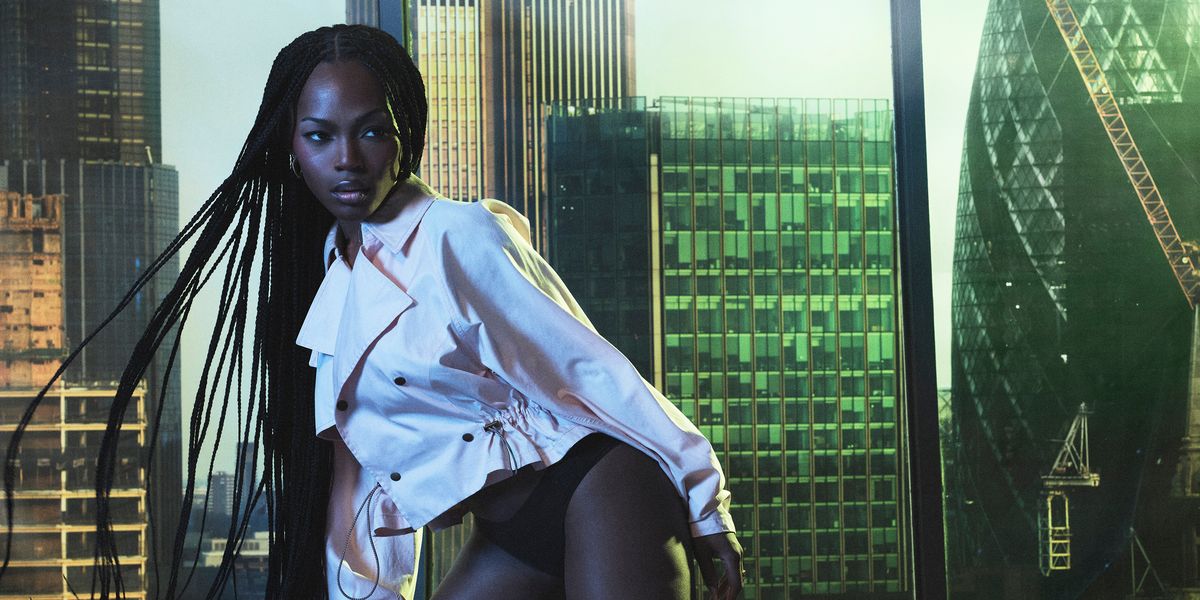
The Best Advice Bill Cunningham Ever Gave Me
Feb 25, 2020
In 1994, TV Executive Mark Bozek had the opportunity to sit down with legendary street photographer Bill Cunningham, a fashion historian and trend documenter who normally shunned attention. He was receiving an award and needed a short film made, so he agreed to talk to Bozek. Flash forward more than 25 years and Bozek has turned the 6-hour-long interview into The Times of Bill Cunningham, an intimate chat with the now deceased icon.
In honor of the opening of the film this month, I chatted about Bill with one of his good friends, PAPER Co-Founder Kim Hastreiter, who first got started as a fashion editor in the '70s thanks to Bill. It was through Kim that I met Bill decades ago when she would give him a list of shows by downtown designers to cover. Eventually I took over that job, often with Lynn Yaeger, and Bill would always search us out to ask if some designer was worth the time. Bill had no interest in hype or famous people. He just wanted to know if the clothes were amazing and if people with interesting style would be there. It was heaven to see Bill at an Asfour show or Heatherette, a show filled with club kids and wild style. He was like a kid in a candy store. Bill loved calling us "kids," even though we certainly weren't young — except, maybe, compared to him.
I'll always cherish one memory with Bill at the CFDA Awards. I was wearing a Proenza Schouler sparkle top and crazy giant Fenton necklace with bits of Day-Glo plastic on it. This was all under a tuxedo. Bill saw me come in and looked like he was in a panic. "Have you seen Iris Apfel?" I hadn't, but Bill grabbed me by the hand and proceeded to drag me around Lincoln Center ignoring movie stars and fashion icons as he tried to find Iris. Finally, we found her and he threw me next to her. It turned out Iris was also wearing a similar ensemble with neon colors and tons of jewelry. Bill snapped photos maniacally, zooming in, moving back. He was on a mission. Eventually he stopped and chatted animatedly with Iris and me, deliriously happy. Later that week, a manila envelope turned up at my office with my name and address handwritten on it. I opened it and it was an 8 ½ x 11 color print out of a shot of Iris and me and the CFDA Awards. We looked amazing together. On the back, Bill wrote: "THIS is fashion. Love, Bill."
What do you think about the doc?
I love the documentary because it's just so wonderful to hear Bill again, first of all. And it was just a good story, you know? Because [director Mark Bozek] had access through the niece to all those archives. So he got to go through everything, which was totally unbelievable. The pictures were amazing and I think he did a great job.
Why do you think Bill was so special?
I met Bill probably in 1977-78 because I used to sell clothes, as a day job, on Madison Avenue at this store called Betsey Bunky Nini. I lived on Prince Street, so I'd take the R to 60th Street and get out and walk four blocks because it was on 64th Street. Bill used to stand on the corner of Madison and 60th Street to shoot in those days for The New York Times. I had no idea who he was. I used to dress crazy; I would dress in bondage pants and hot pink boots. I would go out all night and stay up, and then I'd wear what I wore to the clubs to work, so I always looked insane. Bill used to go crazy because on Madison Avenue it was unusual. In those days downtown was very different from uptown, so he loved me and used to shoot me like crazy. I also had this coat that was very unusual. It was a blanket coat made out of a Hudson Bay blanket and it had all this fringe. My friend had loaned it to me and I wore it every single day. It was outrageous.
I remember seeing pictures of it.
I also used to have these big red Emmanuelle Khanh sunglasses. So Bill would shoot me, shoot me, shoot me, and we just started talking. Then he ran this picture of me in one of his columns, so I figured out who he was. In those days, I had just moved below Canal Street in this artist loft and there used to be this huge flea market downstairs. I would go every Saturday and Sunday, sometimes I would even sell stuff there. Bill would always be there. So I was like, "What are you doing here?" He said, "All the kids are here and I'm just photographing them." At the flea market! He loved the flea market, so I would start seeing him and we became friends.
"[Bill] was kind of like a little street rat. I don't even remember him on his bicycle. He was just standing on the corner, always taking pictures."
This was really all before the advent of street style photographers, so did you think it was weird that someone was taking your picture because of your look?
I didn't even think about it. It was in the days after Studio 54 and then Mudd Club started. I was really going to Mudd Club in those days because I was never really that big of a Studio 54 attendee. [Bill] was kind of like a little street rat. I don't even remember him on his bicycle. He was just standing on the corner, always taking pictures. We had street style. People dressed up.
But nobody took pictures of it and documented the looks like he did, did they?
Not that I was aware of. In those days there were no computers, no cellphones. You got all your information from newspapers and there was this newspaper, called the Soho News that was downtown. It was like our bible. Every Wednesday morning, it would come out and that's what you did. You bought it and looked through everything. It had a calendar that told you every club, every party, every art opening, every opening of anything, every concert. You planned your whole week from it. Did you ever hear of Annie Flanders?
Of course.
She used to be the style editor of the Soho News, so she loved Bill Cunningham and would invite Bill to shoot street style. Then Annie quit and started the magazine Details. So Bill came up to me, because I would see him every day coming to work, and said, "Oh, you should take the job at the Soho News." I was like, "Well, I'm an artist," because I was an artist in those days. I was trying to get a studio, I had just come from CalArts. I was trying to figure out how to make my art, what gallery to get in, how to get into The Whitney's program with the Biennial — deep into that.
It turns out, they were trying to hire Bill to take Annie's job and he didn't want the job. The only way he could think to say no, was to find someone else. I was thinking, I don't really need to keep selling clothes, it's boring. I had never done anything in journalism, but it's better than selling clothes, Bill said, "Come down, I'll introduce you." So he called them up and then they called me, I guess cause he told them they should hire me. In those days I was working with this friend from college, Branca. Did you ever meet Branca?

Photography: Piérre Houles
I did, I did.
She was in art school and we did windows together, selling clothes. She was a good friend, so I said to Branca, "Bill wants me to go to the Soho News. If I can convince them to take two of us, would you do it with me?" I was nervous, because I didn't know how to do journalism or anything like that. And she was like, "Ok." She hated selling clothes, too. I told Bill, "What if they hired the two of us?" Meanwhile, it all happened and we went down there and we basically split a salary. They got two of us for really cheap for the price of one, and Branca and I were both hired as the style editors there.
Amazing.
We did these crazy style sections and it was really fun. I didn't know what I was doing, but I had to fill 10 pages a week. Can you imagine? That's a lot. I knew all the artists I went to school with, and I was going to Club 57 and the Mudd Club, so I was meeting Kenny Scharf, Keith Haring and all those people. I started asking the artists to do stuff with some of the pages I had. It was totally wild west at [the Soho News]. You got there 1 in the afternoon. You didn't have to go to work till then because everyone was up all night at the clubs. You had to go to the Mudd Club to find the art director and then drag her back to the office at 2 in the morning to do your layouts. It was crazy there. We had a drug dealer that would come to the office. Everyone was smoking pot.
I love it. I remember Bill gave you some very good professional advice.
Yes! The Soho News got bought by these stupid people in England, who didnt know anything. All of the sudden, it was shut down and I didn't have a job. And then, I was like, "Oh my God, what should I do?" I was still seeing Bill at the flea markets mostly, because I wasn't going uptown. Within a few years, after trying to work at normal jobs, which I was never cut out to do, I decided to start PAPER in my house with someone from the Soho News, David [Hershkovits], and these two other art directors. My two art directors were both also the art directors of the New York Times magazine. They said, "We can get you the typesettings in the middle of the night, if you come to the New York Times office on weekends." We started in my house, but we ended up, for the first few [issues], in the New York Times. Meanwhile, Bill was working for the New York Times, but he wasn't really that famous. He was shooting his pictures, doing his column. He always ate at the cafeteria on the 8th floor of the New York Times. That's where he ate all his meals. Our two art directors' offices were also on the 8th floor and we would sneak into the New York Times on a Friday, and we would do the whole PAPER [issue] over the weekend. We would literally stay up all night, stay there the whole time and then have to move out before Monday morning when everyone came to work.
"That was his business advice: 'Just take the cheapest paper and print it on that because that's your freedom.'"
That's so crazy.
We used to pay off people to type stuff, it was crazy. David had a bicycle and would go around collecting all the copy. I would do all the pictures and we would bring it all to the New York Times. Meanwhile, David would do the copy editing in the cafeteria, right? We would see Bill all the time. We told him what we were doing and he laughed so hard. He loved it, he was like the only person that knew because what we were doing could really get those two art directors in trouble. We included Bill in our secret.
So sweet.
So we would see him all the time and he was cheering us on. He loved it. And then when he saw the first issue [of PAPER], the poster, he loved it. He kept telling us to keep doing what we were doing. David and Bill always talked politics because Bill was very politically aware. I think it was the end of Reagan and the beginning of Bush, Sr. — very Republican. Bill would always tell us, "Oh, it's cyclical, don't worry, it'll come back. it's all cyclical, it will all come back." Because we were all moaning about Reagan and Bush.
It's true.
Bill kept our secret, he didn't tell anybody. Then we moved PAPER to my house because we didn't work with our other two art directors anymore and moved on. We would always still see Bill and he was always screaming at us, "Don't print on nice paper, just print on shitty newsprint like a newspaper!" Because it is going to bite you. That was his business advice: "Just take the cheapest paper and print it on that because that's your freedom, otherwise you won't be free. Someone is going to have to pay for it, you're going to have to sell out." He would lecture me, every time I saw him, "Don't print on good paper!" That was his big thing always, "Don't spend any money. If you start spending money, you'll lose your freedom." And that was something that really resonated with me because I couldn't work at a job. I tried to work at a normal company and I hated it.
In those days being independent was the big new thing. Independent record labels started, independent film companies started and we were one of the first independent magazines. Bill was always there cheering us on saying, "This is fantastic, but just don't sell out! Don't take anybody's money! Don't spend money! Don't sell out! The second you sell out you're going to have to work, you're going to have a job." And I didn't want a job. It really influenced me. I always knew when we raised money it would be over. Bill was like our champion.
Was that around the time Bill was doing those big issues of Details, where he would do 100 pages? What were those like?
Yes, Bill was doing Details, which was amazing and those were the most incredible.
They were him covering the fashion collections. Shooting them and editing the layouts?
Yes, Annie would give him 100 pages and he was never doing that for the New York Times. I think for the New York Times he was just shooting society or people on the street. These Details things were over the top. That's what the Soho News wished he had done for them. He was really close with Annie. Annie totally gave Bill complete freedom. He was someone that could not be told what to do or given limits. As many pages as he wanted, she would print and the whole issue would be that. And he did some outrageous things where he would upset people because he would also call people on things when they copied.

Photography: Bill Cunningham
Like @DietPrada, but in hard copy back in the day.
Bill would call it out. He would call out actual designs. I remember he did it to Isaac Mizrahi once and Isaac was devastated — devastated. He'd call out the vintage Geoffrey Beene 20 years before and put it next to a new Isaac Mizrahi, and they'd have the same neckline or hood or whatever. He would run them next to each other really big. He wouldn't berate them, but he would just point it out. I don't know where those issues are or who has them if they exist in the library anywhere. Someone should do a book of those.
It was special. He was really an editor in that way.
He wasn't really able to edit himself. In a way, he needed an editor because he needed to reign it in sometimes. But, you know, not everyone is an editor. Sometimes less is more, and he was never a less is more type of person. He was more is more. If he wanted 100 pages, he'd get 100 pages. He would frame everything for a reason. Every piece of clothing that would come down a runway, he would put in context. He was a historian. He knew his fashion history and then he would insert his knowledge into current collections. He would also be able to track trends. If he saw everybody's doing red plastic, he would put all the red plastic stuff together. He was a storyteller. He was over the top. He had so many things he would run. He had a million pictures. I think the hardest thing for him in the Times was editing it down.
He did like to include a ton of pictures.
The other thing about Bill is that he wouldn't even call himself a photographer, just a historian. When I worked at the Soho News, he wanted to cram so many pictures in that he would make them the size of postage stamps. He wouldn't want to lose any pictures, so he'd make them really small. And sometimes he'd do that in the Times, too. But you'll lose your audience if you can't see the pictures. Sometimes a good editor has to give it up. You have to give shit up sometimes. Sometimes you have to bite the bullet and give it up so the pictures can be bigger. We did that a lot at PAPER: crammed in a lot stuff. Sometimes being a really great editor requires restraint. Bill had no restraint.
Well it's hard to cut out great pictures.
I remember he did this [piece] for Soho News once. For me it was like, "Oh my God." He came and said he had a piece so I said "Let's run it." It was all people with shredded t-shirts — shredded shredded. It was like the moment in fashion, probably in1978. All the kids were shredding their t-shirts in a way that was kind of methodical with like sweatshirts and tee shirts and pants. Everything was shredded and in grids. It was really something. And he discovered them all in Central Park and shot a billion pictures. I just remember we ran a page of this, but we had 100 pictures on the page and they were all like postage stamps. I kept trying to get him to drop some because you couldn't even see half of them they were so tiny.
"Sometimes less is more, and [Bill] was never a less is more type of person. He was more is more. If he wanted 100 pages, he'd get 100 pages."
Did you see him change much or do you feel like he was exactly the same throughout the years?
As we get older, we do have issues. I would always give him a list of young designers to cover. But when he got hit by the truck, it was a big epiphany for him. His house started to be an issue and he didn't have health insurance. He was always like, "I won't take a job because I'll be a sellout and I despise that." That was so his thing. He was so anti-establishment and anti-corporate that he refused to work or sign any kind of contract for a company, so the New York Times for so many years tried to get him. He was exclusive, yet he didn't want to be exclusive. He was loyal to them because they were a good company. They would pay him, they cared for him, they gave him a desk. Their relationship was personal, so he was loyal. And they were always saying, "Bill, you need to get health insurance." But he was always like, "I don't want to be an employee. I don't want to be an employee." When he got hit by that truck, the Times came to the rescue. They probably paid for his doctors and everything, but they were like, "Come on, just go on salary and we'll put you on our health plan." So he did, and it was good. He trusted them, but he never would have done that for anyone else. He didn't want a boss, but they were looking out for his well-being. He ended up going on their health plan, and thank goodness! I guess when you turn 65, you need care. He still always hated when you gave him money. He wouldn't take any food or handout. He equated money with losing your freedom. In his mind, if you took money, then they would own you — kind of like Bernie Sanders, right? He would like Bernie Sanders, I think.
Do you think it's possible for there to be anyone like him again or is that time passed?
People can't be duplicated, but there are certainly amazing people doing amazing unexpected things or on the street with photography or with documenting people. Absolutely! It never ends. I hate when people say, "There will never be," because there are people. Bill Cunningham was unique. There will never be a duplicate of him, never. No one will ever do the exact same thing that he did, but there will be another genius who's doing something a little bit different. That's what I love to look for: who are those people?
Photos courtesy of Mark Bozek
From Your Site Articles
MORE ON PAPER
Entertainment
Matthew McConaughey Found His Rhythm
Story by Joan Summers / Photography by Greg Swales / Styling by Angelina Cantu / Grooming by Kara Yoshimoto Bua
Story by Joan Summers / Photography by Greg Swales / Styling by Angelina Cantu / Grooming by Kara Yoshimoto Bua
30 September
Music
Demi Lovato Is No Joke
Story by Ivan Guzman / Photography by Jason Renaud / Styling by Chris Horan/ Makeup by Loftjet / Set design by Allegra Peyton
Story by Ivan Guzman / Photography by Jason Renaud / Styling by Chris Horan/ Makeup by Loftjet / Set design by Allegra Peyton
15 September
Music
Role Model Isn’t In Kansas Anymore
Story by Tobias Hess / Photography by Richie Talboy / Styling by Angelina Cantú / Grooming by Jerrod Roberts / Set design by Allegra Peyton
Story by Tobias Hess / Photography by Richie Talboy / Styling by Angelina Cantú / Grooming by Jerrod Roberts / Set design by Allegra Peyton
14 August
Internet
Quen Blackwell Takes Over
Story by Ivan Guzman / Photography by Richie Talboy / Styling by Angelina Cantú / Makeup by Kimora Mulan / Hair by Malcolm Marquez / Nails by Kimmie Kyees / Set design by Allegra Peyton
Story by Ivan Guzman / Photography by Richie Talboy / Styling by Angelina Cantú / Makeup by Kimora Mulan / Hair by Malcolm Marquez / Nails by Kimmie Kyees / Set design by Allegra Peyton
11 August
Music
Ravyn Lenae Enjoys the View
Story by Erica Campbell / Photography by Richie Talboy / Styling by Angelina Cantú / Makeup by Matthew Fishman / Hair by Jacob Aaron Dillon / Nails by Kimmie Kyees / Set design by Allegra Peyton
Story by Erica Campbell / Photography by Richie Talboy / Styling by Angelina Cantú / Makeup by Matthew Fishman / Hair by Jacob Aaron Dillon / Nails by Kimmie Kyees / Set design by Allegra Peyton
04 August




